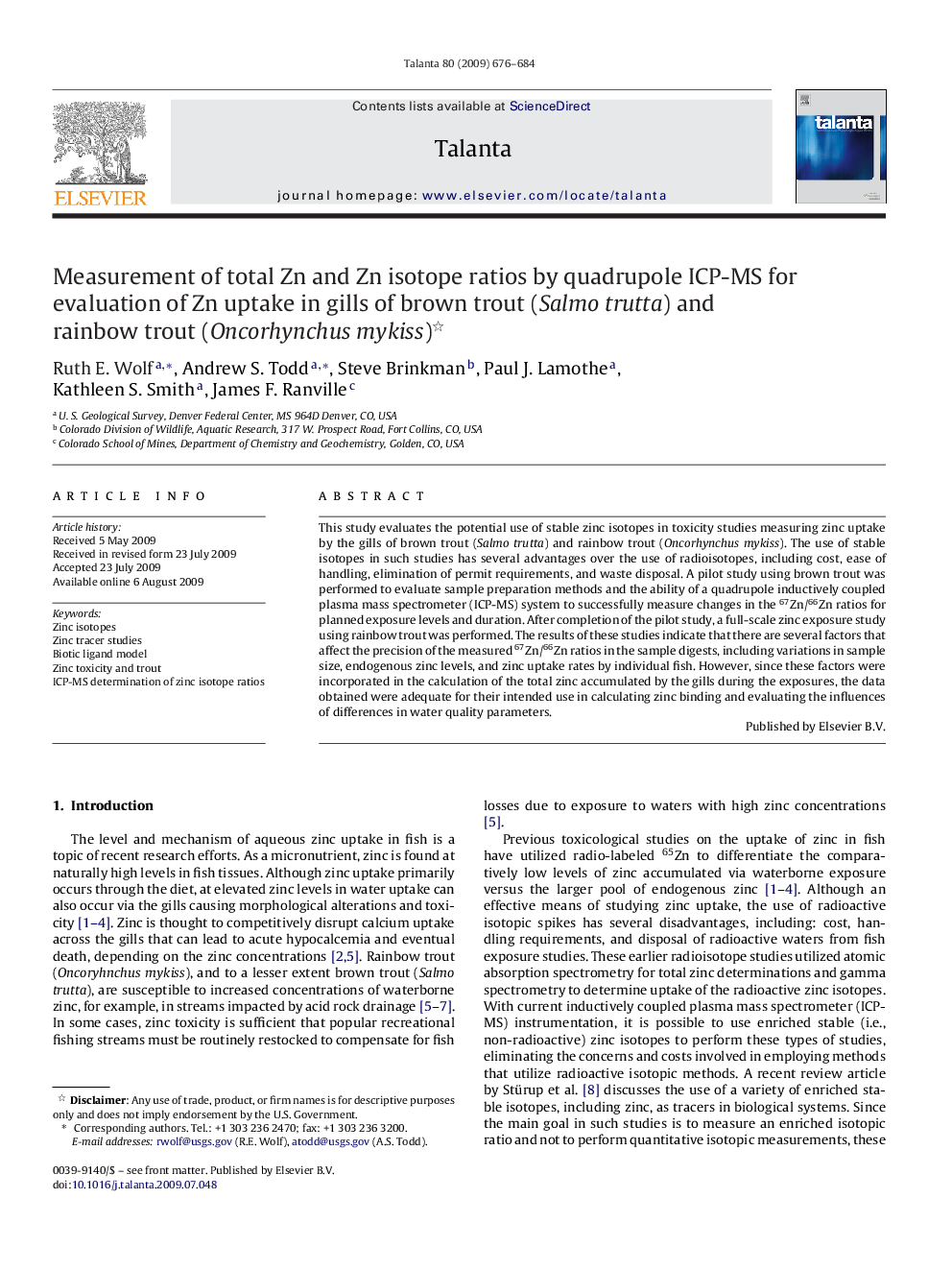| Article ID | Journal | Published Year | Pages | File Type |
|---|---|---|---|---|
| 1246746 | Talanta | 2009 | 9 Pages |
This study evaluates the potential use of stable zinc isotopes in toxicity studies measuring zinc uptake by the gills of brown trout (Salmo trutta) and rainbow trout (Oncorhynchus mykiss). The use of stable isotopes in such studies has several advantages over the use of radioisotopes, including cost, ease of handling, elimination of permit requirements, and waste disposal. A pilot study using brown trout was performed to evaluate sample preparation methods and the ability of a quadrupole inductively coupled plasma mass spectrometer (ICP-MS) system to successfully measure changes in the 67Zn/66Zn ratios for planned exposure levels and duration. After completion of the pilot study, a full-scale zinc exposure study using rainbow trout was performed. The results of these studies indicate that there are several factors that affect the precision of the measured 67Zn/66Zn ratios in the sample digests, including variations in sample size, endogenous zinc levels, and zinc uptake rates by individual fish. However, since these factors were incorporated in the calculation of the total zinc accumulated by the gills during the exposures, the data obtained were adequate for their intended use in calculating zinc binding and evaluating the influences of differences in water quality parameters.
